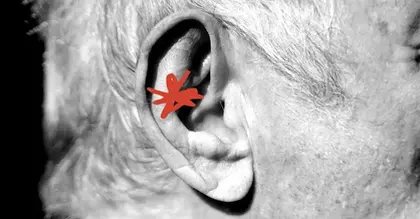
Recent surveys and analyses suggest that our society is vulnerable to absorbing misinformation, including health misinformation, particularly through social media dissemination. In this context, how can we tell if we can trust a source of health information, and what can we do to protect ourselves against inaccurate health advice? Medical News Today investigates.
In today’s world, information travels fast, aided by mass media and social media dissemination. This means that health advice is at our fingertips but it can also mean that we may imbibe inaccurate health information if we are not careful.
We could thus very easily come across health misinformation — information that has been misreported, misinterpreted, or is otherwise inaccurate.
According to a consumer survey conducted by Healthline in 2024, among respondents in the United States, more than half reported they gathered health information via social media, and 32% said they relied on family, friends, and colleagues for health advice.
Yet, despite admitting to relying heavily on social media for information, respondents also overwhelmingly indicated that they did not fully trust the accuracy of these sources.
In the United Kingdom, a nationally representative survey conducted by The Alan Turing Institute in 2024 found that 94% of the population had reportedly witnessed misinformation circulating on social media.
But how can we know if what we are looking at is an accurate piece of information or not? How can we verify our sources of health information? To find out more, Medical News Today spoke with Dawn Holford, PhD, a research fellow in the School of Psychological Science at the University of Bristol, U.K.
Holford is a behavioral science researcher who specializes in the psychology of communication and decision-making, and she has studied strategies for the prevention and rebuttal of Health misinformation.
To better understand why we might fall for health misinformation in our quest for help and advice, we should look at our “attitude roots,” Holford told us.
This concept was coined by psychologist Matthew Hornsey, and it refers to the beliefs and ideas of the world that we have consolidated within our minds since we were young.
“Attitude roots are part of our psychology, and they can be beliefs, worldviews, emotions — basically, they are motivational drivers of how we process information,” explained Holford.
These “roots” can also include emotions like anxiety about something whose mechanics we do not really understand, including invasive medical exams, medications, and vaccines.
“For example, my team and I have looked at
11 different attitude roots that drive misinformed beliefs about vaccination; these include fears about adverse medical outcomes, religious concerns, or even a tendency to push back against being told to do things — a trait known as ‘reactance.’ When (mis)information is given to us that aligns with our attitude root, we’re more likely to take it on board, as it fits with that underlying motivation. This is quite a common thing in general: People tend to seek out and interpret information in line with their existing patterns of thinking and inquiry.”— Dawn Holford, PhD
The expert further noted that general anxiety about going to the doctor and undergoing medical procedures could render us more likely to pick up misinformation that might consolidate that fear.
While this may appear unintuitive — why should we want to continue to feel anxious about something? — it is, in reality, consistent with how our brains work.
Research has shown that humans are very much prone to confirmation bias — we like to selectively look for evidence in support of already-held beliefs and anxieties — and, further, this confirmation bias is a tendency so strong that it can be really hard to dislodge.
However, said Holford: “Attitude roots aren’t bad or good in themselves. They are simply our motivators, shaped by our life experiences and thinking patterns. It’s how they interact with the information environment that might lead to believing in misinformation.”
What, then, is the greatest risk factor when it comes to picking up misinformation? Who is most susceptible to taking inaccurate health information as fact, and why?
Once again, Holford told us that “there is wider research looking at this issue of susceptibility, and this finds that people tend to believe information more if that information aligns with their ideology.”
Yet she also added that certain psychological traits may render us either more or less susceptible to assimilating misinformation.
For instance, Holford said a person’s “willingness to consider different perspectives and evidence, known as ‘actively open-minded thinking’,” is associated with lower susceptibility to misinformation.
“Taking all this into account, I think of the issue of susceptibility as ‘who could be vulnerable to what types of misinformation’. In other words, which group would be more susceptible depends on how misinformation is crafted to create alignment with people of that group’s beliefs.”
— Dawn Holford, PhD
Holford also emphasized that some of the anxieties that make people susceptible to misinformation and even to disinformation — fake information spread with malicious intent by bad actors — arise from real-life negative experiences within the health system.
“To give some examples, we would be more susceptible [to] disinformation that vaccines were intended as a foreign plot to sterilize people like us if we’d had previous experiences — most of the time legitimate! — that shaped our attitude root of distrust of, say, colonial governments,” she pointed out.
Experiences of racism in healthcare, being denied timely treatment due to gender bias, or just overall poor experiences within institutional spaces could all amplify a person’s anxieties and contribute to their susceptibility to inaccurate or downright false health information.
At the same time, Holford explained, “We might be less susceptible to a disinformation narrative that plays into one’s love of all things natural if we don’t really care about that.”
“Often, these narratives can be crafted in overlapping ways so they could target two groups at once, but it’s helpful to think about which attitude root is the target in a piece of misinformation,” she continued.
Holford and her colleagues have been working on the development of a strategy they call “jiu-jitsu interventions” to help people tackle health misinformation.
She explained how this strategy works:
“We conceptualise ‘jiu-jitsu interventions’ as [trying to] use misinformation against itself. […] In jiu-jitsu [a Brazilian martial art], you don’t try and fight with an opponent head on, but rather let them attack and leverage that force to fight back. In this way, we are able to challenge what may seem like a stronger and insurmountable foe. Which I think is important when we look at the scale of the challenge with misinformation. So our interventions look at what are the features of misinformation, what it is that makes it sticky, that makes people susceptible to it, and we use those to build people’s skills to defend themselves or others against misinformation.”
Two types of such “jiu-jitsu” interventions against health misinformation are:
- psychological inoculation against misinformation, and
- empathetic refutation of misinformation.
The researcher told MNT that psychological inoculation is thus called because it works similarly to a vaccine, figuratively speaking.
“We develop interventions warning people about the tactics of misinformation — for example, how it might cherry-pick information, play on our emotions, or rely on fake experts to seem credible. So, we let people experience small doses of how that works, such that they understand how tricky misinformation can be, and build protection to encountering it,” she detailed.
With empathetic refutation, the researchers “develop interventions that are aligned to people’s attitude roots,” demonstrating empathy to “make the correction of misinformation feel less threatening and give it a better chance of being received.”
Holford also provided tips on how to verify whether the health information—or any information, for that matter—that we encounter in print or online is accurate.
She emphasized the importance of checking and double-checking the source of information:
“There’s a technique called lateral reading that we can use to look for corroboration of health facts. Basically, if we encounter health information on one site or platform, we would look outside of that site or platform for other sources to determine the credibility of the first source, and whether what we have read is backed up by sources independent of the original source. When it is most important to do this is when we come across health information that seems to fit perfectly with what we want to hear, because this is when we would be most susceptible to incorrect information.”
However, she emphasized that those who disseminate health information, such as medical news websites like ours, have a duty to perform extra-careful fact-checking before releasing that information to the public.
“I […] strongly believe that the onus [to verify the accuracy of information] cannot only be on patients and consumers. Rather than accepting that it’s just up to us to work out what is true, we can advocate for better information quality control on platforms where people go to find health information,” she told MNT.
In an age when many people are increasingly losing trust in governmental public health organizations, the question that arises is: Where can we look for the best, most trustworthy health information communicated in an accessible manner?
Trust, Holford emphasized, “is key to everything” when it comes to information and misinformation.
“Ironically, governmental public health organizations are often the places where the information is reliable — because they are accountable to citizens in a way that other content generators would not be,” she pointed out. “Many also make an effort to share information using accessible language.”
“And because health is a pretty broad area, it’s often governmental organizations that have the remit and the wherewithal to coordinate the expertise required to check information,” added Holford.
However, she acknowledged that “there are cases when we don’t feel able to trust our own governments.”
In that case, she advised looking outside of our local sources and going global:
“We could look [to] the global organizations, and [at] nongovernmental ones. The World Health Organization [WHO] is […] a good source that covers health very broadly. Many other organizations and professionals in public health and clinical fields have tried to fill this gap, so there are alternatives. In the U.K., there have been efforts to gather expert advice across a wider range of health topics, such as Patient Info.”
“[A] best-practice strategy to find information [is] starting with the techniques I spoke of [previously], to look at what is known about the source, and [ask]: What does the consensus across multiple credible sources tell us? And be on your guard if something seems too aligned to what you already believe — it may well be correct, but follow the same steps to verify it,” Holford continued.
Last but not least, the expert advised seeking information from a trusted healthcare provider, who will be well-equipped to answer any questions and fact-check information sources.
“[I]f you have a trusted health provider or community health representative whom you can talk to, it is really worth seeking them out to ask for advice on where to look. Being able to have that conversation, if you have access to that, is probably the best I could recommend,” said Holford.





